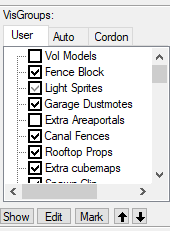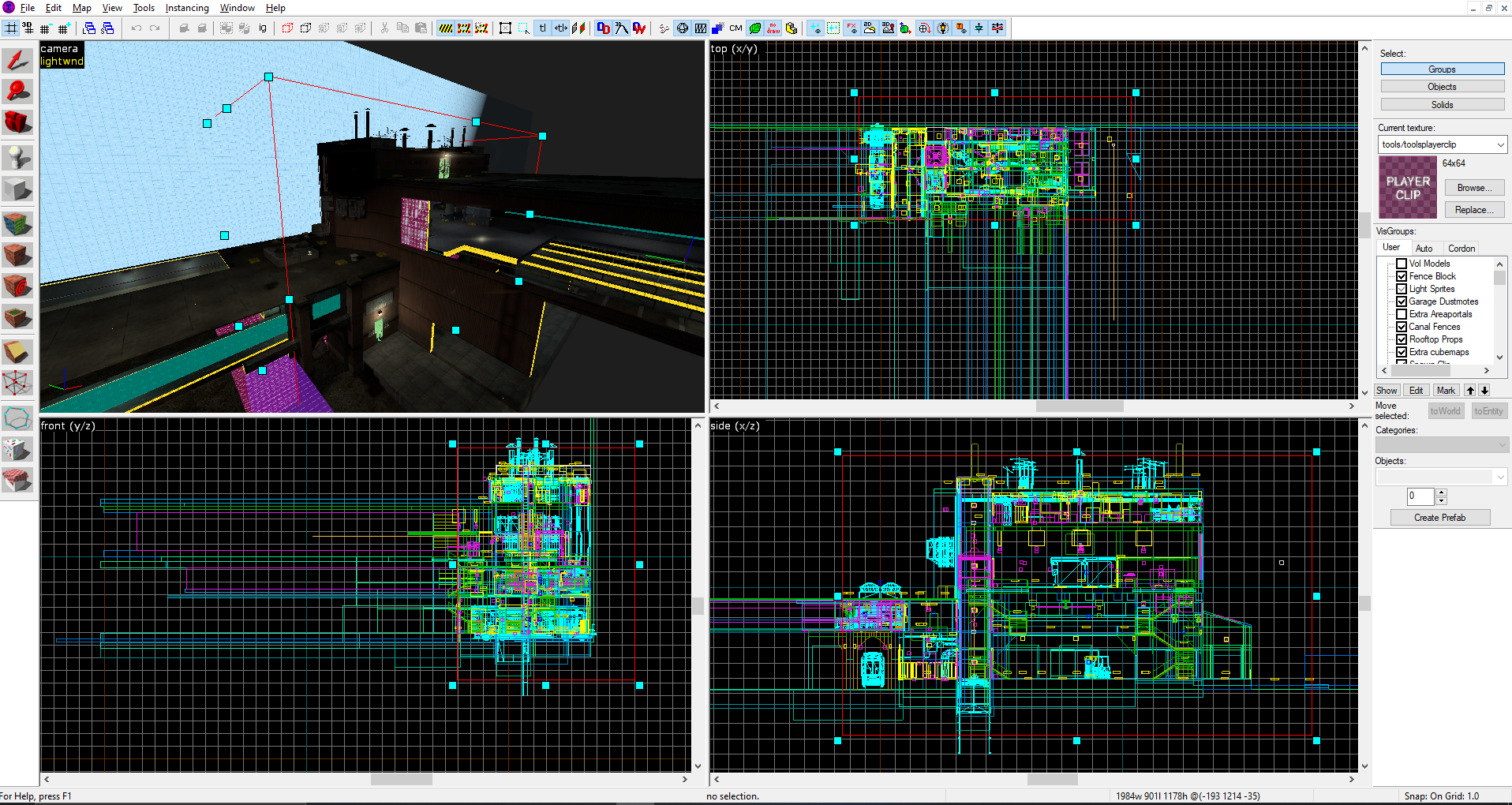Scrap Metal Final edition
Scrap Metal GMod map repository and documentation
Project maintained by kawoofish Hosted on GitHub Pages — Theme by mattgraham
gm_scrapmetal_v5 Documentation for mappers
back to homepage
This is a quick documentation page I’m throwing together discussing helpful tips, known issues, my personal setup and configurations.
Hammer(++)
95% of this map’s development was done on the Vanilla Valve Hammer World Editor (which was a bit of a pain). Especially with this map, even just loading the map (and I have an above average PC setup) would take forever. For the final edition versions, Hammer++ got it’s big update that everyone had been waiting for, and luckily switching to that was pretty simple. Head over to their website and download Hammer++ in the configuration of your choice (in general for GMod, you’ll probably want to use Source SDK 2013 Multiplayer, if you don’t have that installed you can get in the Steam Library -> Tools).
Helpful tips
Visgroups
If you open the map, you’ll take one look at the 2D grids and wonder how the heck you can navigate or place anything. Visgroups, both automatic and user created, are super helpful in clearing things you don’t need to see i.e. aligning world geometry without prop meshes getting in the way. Auto visgroups actually got an enhancement in Hammer++, and I’ve also created some user visgroups that helped me when I was creating. I’ll list out a few of the important ones below:

- Vol Models
- Show/hide volumetric light models. These tend to appear as big white light shafts in the 3D view and a bunch of planes in 2D view. Hammer++ will also dynamically update prop_dynamic colors, so you may not be able to view them easily in the 3D view
- Extra areaportals
- Areaportal usage is done extensively for optimization. However, having too many areaportals can actually hurt performance, so I reduced a decent chunk before the final versions
- Sprites
- In 3D view, sprites can be somewhat annoying visually, so I added a visgroup for them. Hammer++ has an auto visgroup for Sprites that actually works better than mine (keep in mind user created visgroups need to be updated when new entities are copied, cloning with the shift key should retain visgroups)
Cordon tool
I wasn’t very familiar with the cordon tool until recently, and it’s been a big help for me. This tool basically allows you to cull and work on certain sections of your map, which not only cleans up some editing space, but also allows you to compile a working section of that map (without having to readjust skybox / leaks). On the old Hammer this became crucial because the map’s 3D view could barely handle everything being rendered at once (I used to be on an old computer that was pretty slow).

Known Issues
“Too many T-Junctions to fix up!”
Hoooo boy. This error may have been the most frustrating to try and debug after such a long time from the original map creation. For some Source Mappers, you may have never encountered this error before (V4’s development was the first time I did), and it’s not exactly a simple explanation on what it is / how to fix it. You can search online for exact explanations, here’s a Reddit post that summed it up pretty well
Problem statement aside, I’ll try and sum up what you could potentially do on this particular map if this comes up. First, start filtering (through visgroups) any potential candidates of func_detail to remove. I had to do this approach throughout the later versions of the map (hence why some world brushes that could be “func_detail” are not). Next, check if any world geometry or func_detail objects are intersecting, clipping, off the grid, etc. Try to keep everything as clean and on grid as possible to give Source an easier job on compile. If those fail and the error is still prevalent, I’ve found that turning some complex objects into func_brush helps solve the issue. Caveats to this are increasing the entdata (func_brush is considered an entity which is more expensive than func_detail, which technically isn’t an entity based on my understanding), and there may be some lighting that looks off
Running the map (.bsp) in other Source games besides GMod
Up until the last few versions of the map, and before Hammer++ had been released, I was using the Half-Life 2 version of Hammer. This worked pretty well, until I started having some weird crashes and issues (ED_Alloc: no free edicts was one). I did my best to try and stay within HL2’s engine limits, but ultimately (since this is made for the GMod workshop), I may have gone a little over what a standard Source engine game can allow. GMod has a much higher entity limit (for Sandbox props, other networking stuff), so I’d recommend using GMod for development, unless you’re cutting the map down or reworking it for something else.
Read more about entity limits in Source here
Hammer compile configurations
Generally I’ll compile on “Fast” and do a quick and dirty compile to check lighting and props, although Hammer++ lighting preview now drastically helps with that in-editor. The main thing I can throw out there is if you’re on a final compile, or want to see how lighting is affecting static props, I would run with the 3 advanced static prop lighting commands.
-StaticPropLighting -StaticPropPolys -TextureShadows
Add these to your VRAD configuration and you’ll get much more accurate lighting on static props. Scrap Metal extensively uses this to get proper lighting for pipes and props embedded inside geometry. Mainly because Source usually calculates a static prop’s lighting based on the “origin” (in the Hammer editor, you’ll see the XYZ axes coming out of a certain point). If you have a beefy processor and don’t want your CPU at 100% slowing everything down, you can also set a thread limit so you leave some CPU left for multi-tasking
-threads 12
Hammer++ also fixes the tendency for the default Hammer compiler to freeze up during compile, which made it difficult to tell if anything was working or not. I’ve been raving about Hammer++ features in all of this, and I do recommend it at this time as it fixes a lot of bugs and issues that Valve has neglected to fixed
Fun facts
I checked back at some old compile logs for the old versions (dated to Oct. 2014), and the map took around an hour to compile (this was on Final settings, static prop lighting). I was probably on some old Intel dual core system and it’s a miracle I was even able to get anything out on that old computer. But hopefully those who try and compile this map for their own use won’t have as much trouble as I did